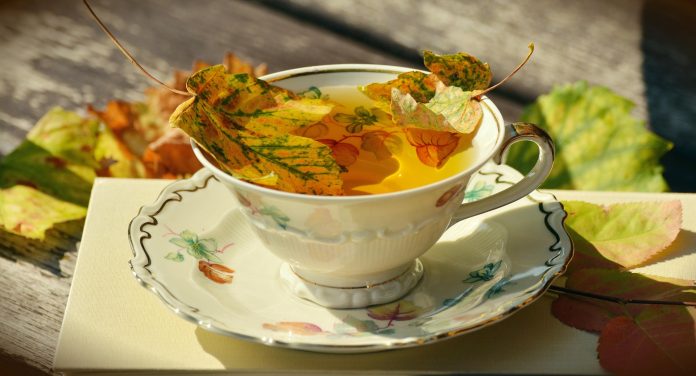Cleveland – One day you’re cranking the air conditioning and complaining about the heat, and suddenly you’re reaching for a sweater on Labor Day weekend. This year’s abrupt shift from sweltering summer to crisp autumn has caught many gardeners off guard, scrambling to adjust their outdoor plans.
After months of high temperatures and sun-scorched lawns, the sudden cool-down feels almost surreal. Many gardeners who were just trying to keep their tomatoes alive through the heat wave are now wondering if it’s too late to plant anything for fall harvest.
The good news? This unexpected cool weather actually opens up opportunities that the lingering summer heat had kept off the table.
The forecast calls for below-normal temperatures and reduced precipitation compared to typical fall seasons. September temperatures are expected to average 59 degrees with 3.5 inches of precipitation, while October will see average temperatures of 46 degrees with 2.5 inches of rainfall.
“Look for scattered showers, brief warm spells, and overall chilly weather,” according to the Almanac’s seasonal forecast for the Midwest region.
Adjusting Garden Plans for Cooler Weather
The cooler fall forecast presents both opportunities and challenges for local gardeners. Cool-weather crops will thrive in the extended comfortable growing conditions, while tender plants may need earlier protection or harvesting.
Experienced gardeners recommend taking advantage of the cooler temperatures to plant fall vegetables that prefer moderate conditions. Crops like lettuce, spinach, kale, and radishes actually improve in flavor when grown in cooler weather.
“If you are wearing multiple layers of clothing, it’s too cold for your tomatoes and your peppers and your eggplant,” advises Judy Sewell of the Garden Club of Kent. “But it’s perfect weather for your cool-season vegetables.”
Cool-Weather Vegetable Success
Several vegetables thrive in northeast Ohio’s fall conditions and can extend the growing season well into autumn:
Lettuce varieties including leaf lettuce, romaine, and butterhead types can be planted now for fall harvest. These crops actually prefer cooler temperatures and may bolt quickly in hot weather.
Root vegetables like carrots, beets, and radishes benefit from cool fall weather. Many gardeners report that root crops grown in fall conditions develop better flavor and texture than spring plantings.
Brassicas including broccoli, cabbage, and Brussels sprouts excel in fall conditions. These crops can often withstand light frosts and continue producing well into late fall.
Spinach and kale become sweeter after experiencing light frost, making fall the ideal time for these nutrient-dense leafy greens.
Extending the Growing Season
Gardeners can take advantage of the predicted cooler weather to extend their growing season with proper techniques:
Row covers and cold frames provide protection for tender crops during unexpected cold snaps. These simple structures can extend the harvest by several weeks.
Succession planting of cool-weather crops every two weeks ensures continuous harvests throughout the fall season. This technique works particularly well with lettuce, spinach, and radishes.
Season extenders like plastic tunnels or fabric row covers allow gardeners to continue harvesting into early winter in some cases.
Preparing for Winter Weather
While the fall forecast calls for cooler conditions, gardeners should still prepare for the eventual transition to winter weather. The Farmers’ Almanac suggests that snow could reach northern Midwest regions by mid to late October, earlier than some recent years.
Garden preparation tasks for the coming season include:
Soil preparation for next year’s garden should begin now. Adding compost, leaves, and other organic matter during fall allows materials to break down over winter.
Tool maintenance becomes crucial as the growing season winds down. Clean and properly store garden tools to prevent rust and damage during winter months.
Plant protection for perennials, trees, and shrubs may be needed if temperatures drop more quickly than usual.
Historical Weather Patterns
The Old Farmer’s Almanac uses solar science, climatology, and meteorology to make weather predictions, claiming 80% accuracy in their forecasts. Their predictions for the 2023-2024 winter season achieved 64% accuracy, including 83.3% accuracy for precipitation and 44.4% accuracy for temperature predictions.
The National Weather Service’s Climate Prediction Center offers a somewhat different outlook for various regions, but both sources agree that gardeners should prepare for variability in fall weather conditions across the Midwest.
These differing forecasts highlight the challenge of long-range weather prediction, but both sources agree that gardeners should prepare for variability in fall weather conditions.
Water Management Strategies
With predictions for drier conditions, gardeners should adjust their watering strategies accordingly. Deep, less frequent watering encourages strong root development in fall-planted crops.
Mulching becomes particularly important during drier fall conditions. A layer of organic mulch helps retain soil moisture while moderating soil temperature fluctuations.
Rain collection systems can help gardeners make the most of scattered fall showers predicted in the forecast.
Local Growing Conditions
Midwest climate zones allow for extended fall growing with proper planning. Most regions typically experience first frost dates ranging from mid-October in northern areas to late October in more protected locations.
Microclimates within individual gardens can extend the growing season even further. Protected areas near buildings or in low-lying spots may avoid frost for additional weeks.
Gardeners should monitor local weather forecasts and be prepared to protect sensitive plants when temperatures threaten to drop below freezing.
Making the Most of Fall Conditions
The predicted cooler, drier fall weather actually benefits many gardening activities. Comfortable working conditions make fall an ideal time for:
Garden cleanup and preparation for next year becomes more pleasant in cooler temperatures.
Tree and shrub planting benefits from fall conditions, allowing plants to establish root systems before winter dormancy.
Compost maintenance proceeds more efficiently in moderate temperatures without the stress of summer heat.
Local garden centers often offer end-of-season sales on perennials, trees, and shrubs during fall months, making it an economical time for garden improvements.
The cooler fall forecast provides gardeners with opportunities to extend their growing season while preparing for the eventual transition to winter weather.
Discover more from Northeast Ohio News
Subscribe to get the latest posts sent to your email.












